Background of the Issue
- Sex trafficking accounts for 79% of all human trafficking and affects 4.8 million victims (Brooks and Heaslip 1105).
- Being sexually exploited inflicts considerable damage on victims in terms of mental and physical health, self-worth, and the ability to return to normal life.
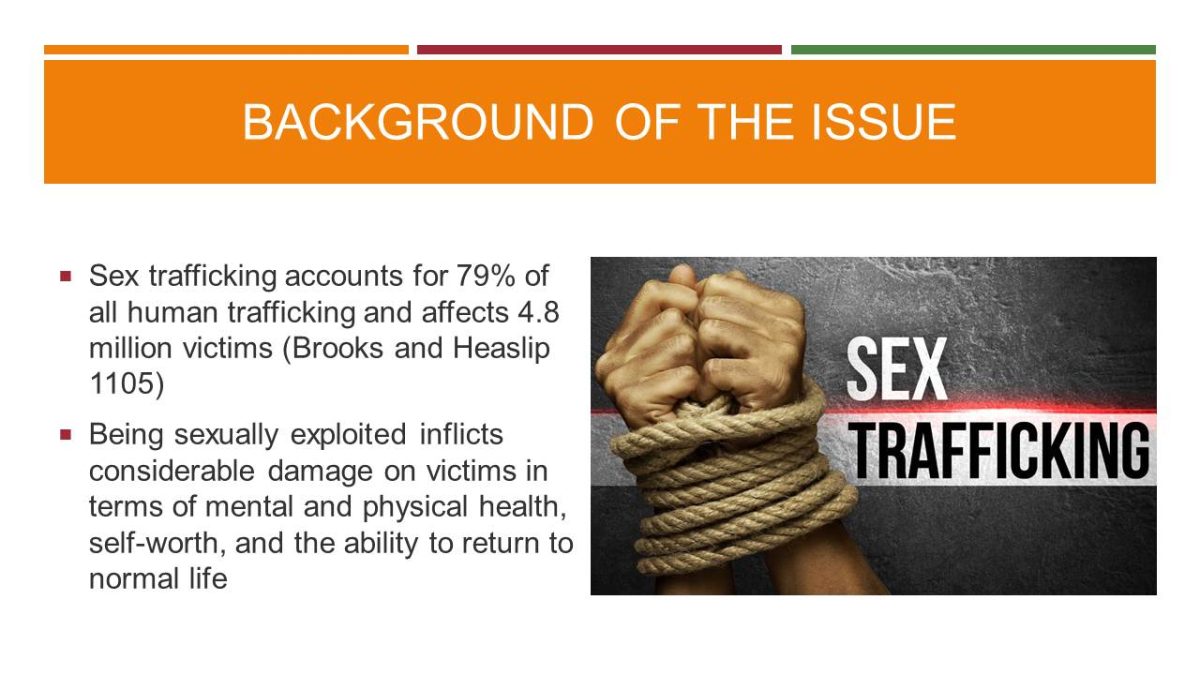
Who’s at Risk?
- Immigrants and individuals living in poverty, especially women, are the most frequent victims of sex trafficking (Brooks and Heaslip 1109).
- Sex trafficking occurs in developed countries as well (Brooks and Heaslip 1106).
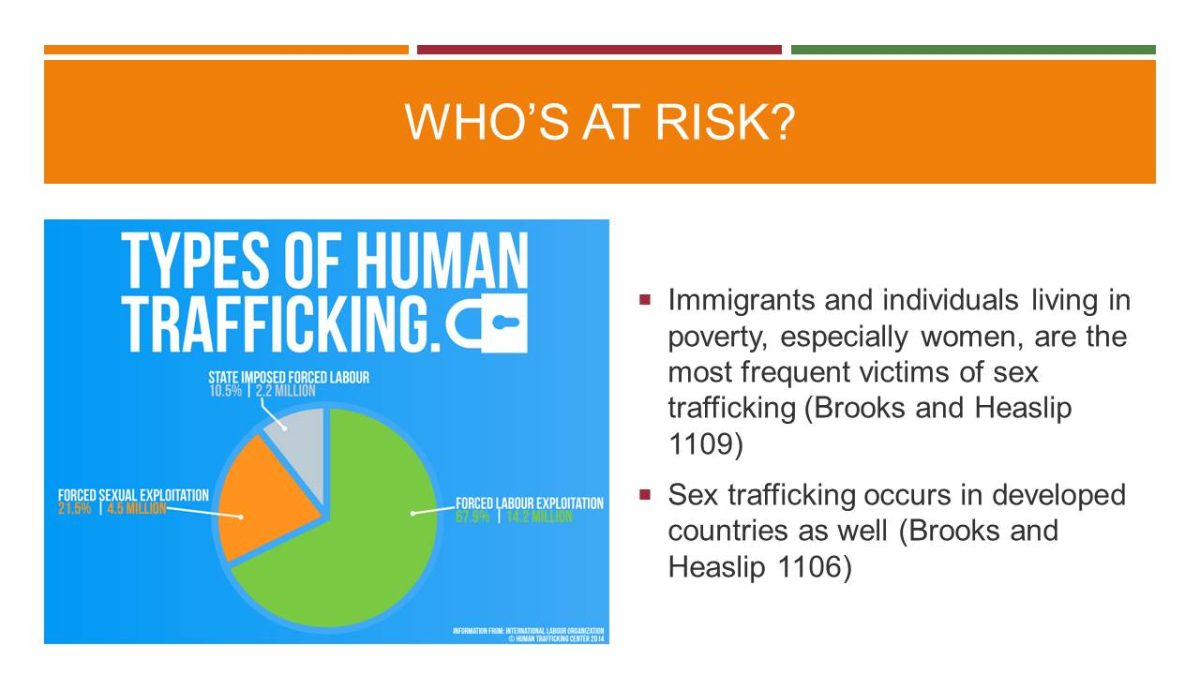
Children Trafficking
- Estimates show that children, mostly aged 14-17 years, account for 21% of sex trafficking victims, which is about one million worldwide (Brooks and Heaslip 1106).
- The number of sexually exploited children may rise because criminals now can search for their victims on the Internet (Leary 310).
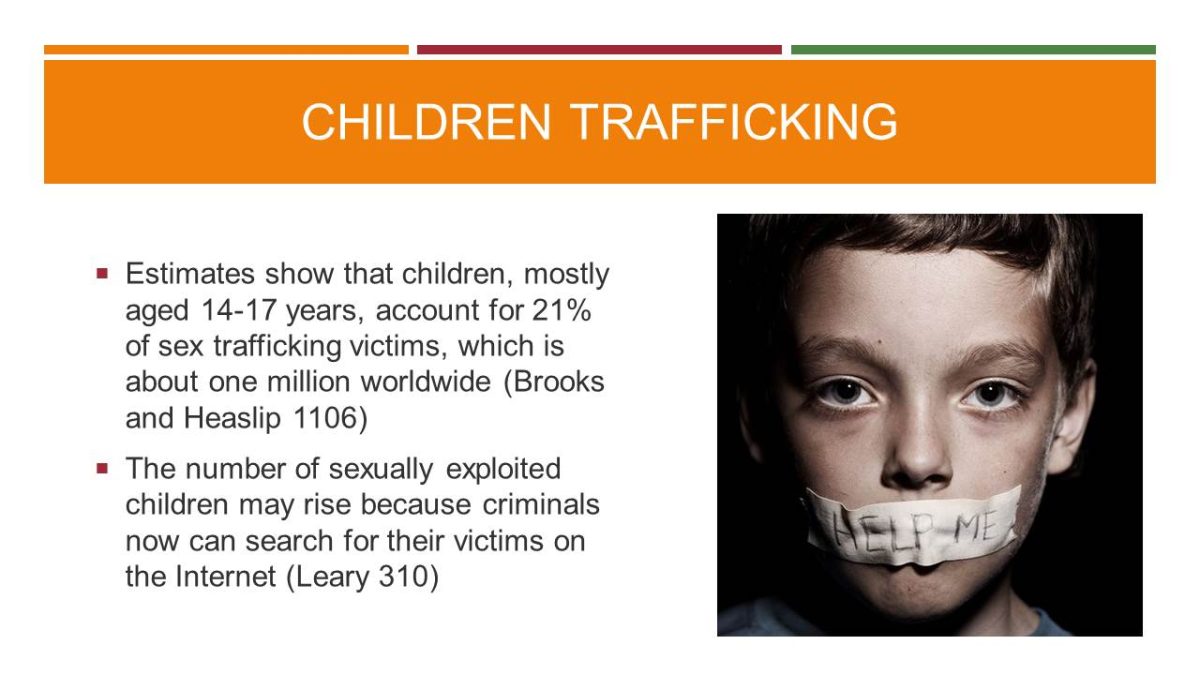
Health Impact of Trafficking
- The longer victims are sexually exploited, the more damage is done to their health (Oram et al. 10).
- Common health problems include post-traumatic stress disorder, depression, headache, chronic pain, stomach pain, back pain, memory problems, and sexually-transmitted diseases (Oram et al. 6).

Drug Abuse
- Victims of sex trafficking are often subject to drug abuse (Brooks and Heaslip 1109).
- Victims have limited access to healthcare because of language barriers, illiteracy, illegal immigrant status, and dependence on traffickers (Brooks and Heaslip 1109).
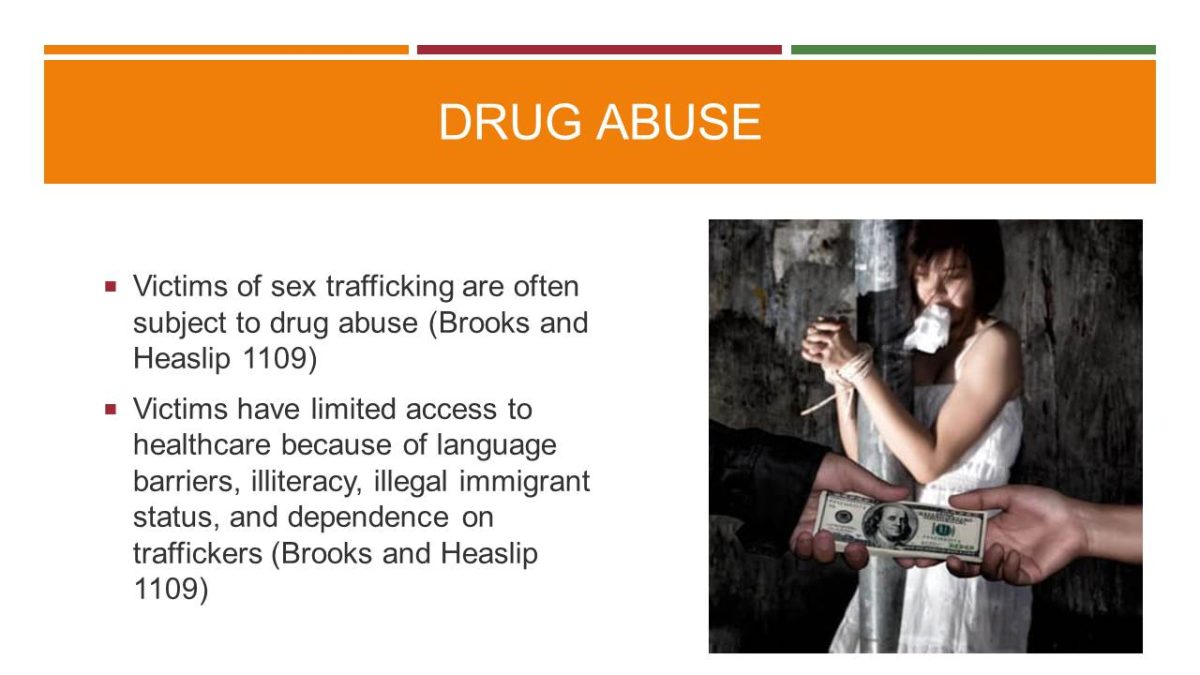
Trafficking: To Report or Not to Report
- Numerous victims do not report being sexually exploited. The reasons for this are fear of retaliation, hopelessness, shame, and humiliation (Greenbaum 242).
- Sometimes, sexually exploited individuals do not see themselves as victims; instead, they regard traffickers as their protectors or paramours (Greenbaum 242).
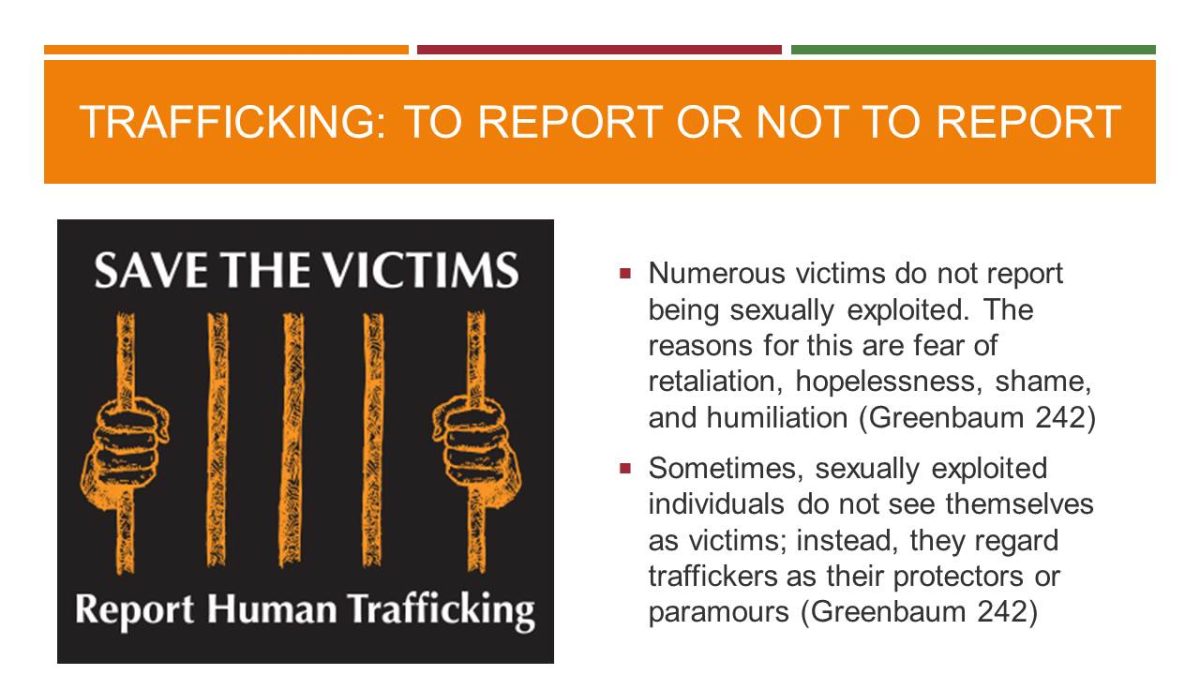
Current Measures = Insufficient?
- In Thailand, sex trafficking is part of the country’s sex tourist industry, which directly relates to the country’s economy (Brooks and Heaslip 1110).
- In Germany, after the legalization of prostitution in 2002, the number of legal cases related to sex trafficking decreased (Weitzer 86).
- Brooks and Heaslip argue that until people begin to discuss the issue of sex trafficking, there will be little progress in resolving the problem (1111).
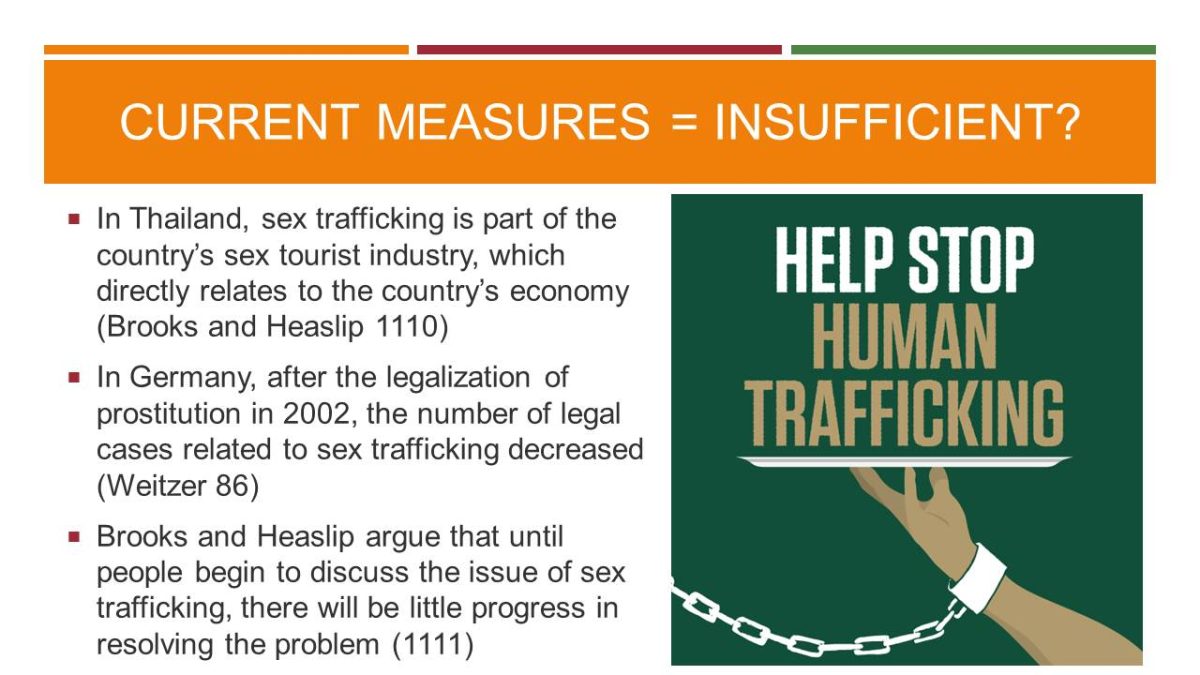
Conclusion
- Sex trafficking has severe adverse effects on the well-being of its victims;
- Victims are unwilling to reveal their victimized status;
- We should openly discuss this problem;
- Individuals should be aware of the resources they can use in case they become victims of sex trafficking.
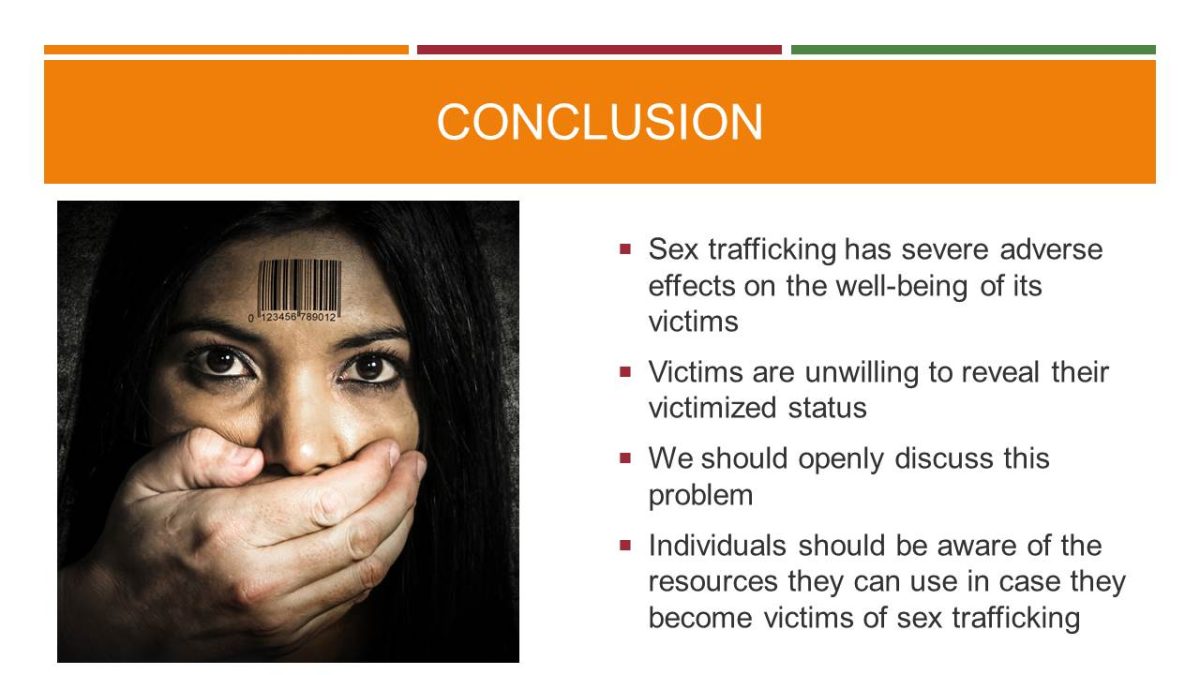
References
Brooks, Ann, and Vanessa Heaslip. “Sex Trafficking and Sex Tourism in a Globalised World.” Tourism Review, vol. 74, no. 5, 2019, pp. 1104-1115.ProQuest.
Greenbaum, Jordan. “Identifying Victims of Human Trafficking in the Emergency Department.” Clinical Pediatric Emergency Medicine, vol. 17, no. 4, 2016, pp. 241-248. ProQuest.
Leary, Mary Graw. “Fighting Fire with Fire: Technology in Child Sex Trafficking.” Duke Journal of Gender Law & Policy, vol. 21, no. 2, 2014, p. 289-323. Gale OneFile: LegalTrac.
Oram, Sian, et al. “Prevalence and Risk of Violence and the Physical, Mental, and Sexual Health Problems Associated with Human Trafficking: Systematic Review.” PLoS Medicine, vol. 9, no. 5, 2012, pp. 1-13. Gale Academic OneFile.
Weitzer, Ronald. “Researching Prostitution and Sex Trafficking Comparatively.” Sexuality Research & Social Policy, vol. 12, no. 2, 2015, pp. 81-91. ProQuest.